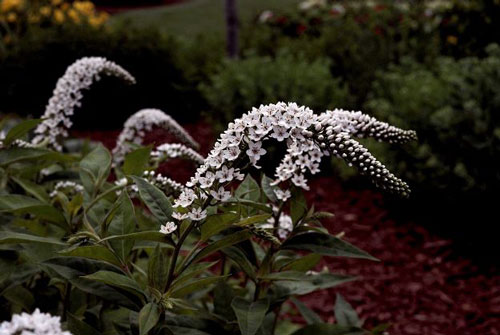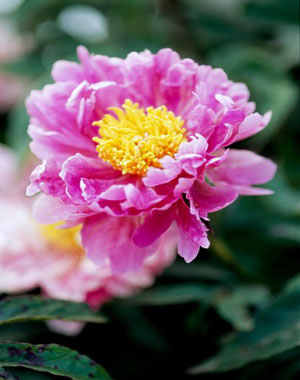Catmint Plant (Nepeta) Profile
Written by Iris
Sep 01 2021
-5.jpg)
Catmint Plant, also called Nepeta, catnips plant, is a perennial herb that is a member of the mint family. Catmint plant is an extremely easy-growing plant with few pests or problems. It has slightly aromatic gray-green foliage with a delicate, lacy appearance. Its billowing foliage is topped with spikes of flowers in early summer, with repeat blooms throughout the season. The flowers of Catmint plant can be white, pink, or lavender-blue.
-4444.jpg)
-3.jpg)
-2.jpg)
.jpg)
You can get rid of slugs and snails with bait such as Sluggo, copper strips, beer traps, or with crushed eggshell. Learn more about defeating slugs and snails. Spider mites can be treated with neem oil. If you see whiteflies, consider using pheromone traps. In hot and humid conditions, gardeners might see disease caused by the bacterial pathogen Pseudomonas. This can be controlled with a bactericide.

Catmint Plant PictureCatmint Plant Ecological HabitsCatmint Plant Distribution AreaHow to Grow and Care for Catmint PlantUses of Catmint PlantVarieties of Catmint PlantCatmint Plant Common Pests/DiseasesCatmint Plant ValueCatmint Plant Companion Plants
Catmint Plant Picture
-4444.jpg)
Catmint Plant info
| Botanical Name | Nepeta spp. |
| Common Name | Catmint Plant, Catnips Plant |
| Plant Type | Perennial |
| Mature Size | 10 to 24 inches tall, 1 to 2 feet wide |
| Sun Exposure | Full sun to part shade |
| Soil Type | Dry, well-draining |
| Soil pH | Acidic to alkaline (5.0 to 8.0) |
| Bloom Time | Late spring, summer |
Catmint Plant Ecological Habits
Most catmint varieties have a somewhat sprawling growth habit, making them nice plants for edging planting areas and for running along paths. However, there are a few tall-growing varieties, like'Six Hills Giant',with a more upright habit. As with many scented, gray-foliage plants, catmint plant is deer-resistant. It grows quickly and, in most climates, can be planted from spring to early fall.Catmint Plant Distribution Area
E. Asia - China, Japan, Indian subcontinent, Myanmar, Thailand, Laos, Cambodia, Vietnam, Malaysia, Indonesia, Philippines, New Guinea.How to Grow and Care for Catmint Plant
Catmint Plant Light Care
You will get the best flowering if you plant your catmint plant in full sun, however, the plants will also grow well in partial shade.Catmint Plant Soil Care
Humus-rich, well-draining soil is ideal. Many species grow easily in a wide range of soil types, including dry clay and sandy or rocky soil.Catmint Plant Water Care
First-year plants need frequent watering, but once rooted, catmint plants are drought-tolerant.Catmint Plant Temperature & Humidity Care
Catmint plants like cool temperatures and benefit from afternoon shade in warm climates. They are often not tolerant of high heat and humidity.Catmint Plant Fertilizer Care
Add compost to the plant’s base in the fall, but once rooted it needs no further fertilization.-3.jpg)
Uses of Catmint Plant
Catmint plants can be used fresh, dried, or frozen for both culinary and herbal use. Harvest leaves as flowers begin to bloom, cutting the top leaves, stems, and flowers if desired. Spread out to dry in a cool, ventilated area and store the dried herb in an airtight container or bag to preserve its potency. The leaves and shoots can be added to soups and sauces. Tea made from the leaves and flowers can be used for calming nerves and relieving coughs, congestion, and menstrual cramps.-2.jpg)
Varieties of Catmint Plant
There are dozens of African daisy species and varieties, including:'Blue Wonder' Catmint
'Blue Wonder' Catmint - Nepeta x racemosa 'Blue Wonder' is compact at 12-15 inches tall. Its neat wrinkled leaves are grayish-green and show off the 6-inch terminal spikes of two-lipped dark blue flowers. Zones 5-9Catnip Plant
Nepeta cataria, otherwise known as the common catnip, is a herbaceous perennial that makes cats crazy. Zones 3-7'Little Titch' Catmint
'Little Titch' Catmint - Nepeta racemosa 'Little Titch' is a lovely dwarf plant forming a compact mound of green foliage with blue flowers. It grows just 8-10 inches tall and spreads up to 12 inches wide, making a great border or edging plant. It blooms almost constantly from late spring through fall. Zones 4-8Faassen's Catmint
Faassen's Catmint - Nepeta × faassenii is a tough perennial herb that thrives in hot, dry weather. Plants feature mounding sprays of silvery-green foliage with a flush of blue flowers. Deadhead or cut back after the first flush of bloom to encourage more flowers. It grows 1-2 feet tall and spreads up to 2 feet wide. Zones 4-9Japanese Catmint
Japanese Catmint - Nepeta × subsessilis bears the largest flower clusters of any catmint plant. Bloom spikes may be 8 inches long and 3 inches wide on plants that grow up to 4 feet tall. Sturdy stems keep the plant from requiring staking or shearing to maintain their strong upright habit. Like other catmint plants, it has a long season of bloom. Zones 4-8.jpg)
Catmint Plant Common Pests/Diseases
Catmint plant is really quite trouble-free, but we’ll touch on a few problems you might encounter. You may see aphids, leafhoppers, slugs, snails, spider mites, or whiteflies. For aphids, blast them off with a stream of water. In the case of leafhoppers, if the infestation is bad, you might have to pull up affected plants. If it’s not too bad, use an insecticidal soap such as this one from Bonide, available from Arbico Organics.You can get rid of slugs and snails with bait such as Sluggo, copper strips, beer traps, or with crushed eggshell. Learn more about defeating slugs and snails. Spider mites can be treated with neem oil. If you see whiteflies, consider using pheromone traps. In hot and humid conditions, gardeners might see disease caused by the bacterial pathogen Pseudomonas. This can be controlled with a bactericide.
Catmint Plant Value
Garden Uses
Butterfly gardens, borders, herb gardens, mass plantings, groundcovers, rock gardens, and as an edging plant along walkways. Catmint plant can also be used as a substitute for lavender, since they share a similar color palette.Good Companions
Catmint’s cool-toned foliage and flowers blend well with most other colors, particularly reds, deeper purple tones, pinks and yellows. Red roses and catmint plants are a classic combination, but equally attractive red-flowered companions include Veronica spicata 'Red Fox', Monarda didyma 'Pardon My Cerise', and red valerian (Centranthus ruber). In the purple color spectrum, try pairing catmint plant with ‘Purple Ruffles’ basil, drumstick alliums and purple coral bells, such as Heuchera Dolce® 'Wildberry'. Just about any yellow-flowering plant looks good alongside catmint plant, but those sharing similar growing requirements and bloom times include Coreopsis grandiflora ‘Early Sunrise’, Achillea ‘Moonshine’ yarrow, and yellow daylilies, such as Hemerocallis ‘Stella de Oro’.Catmint Plant Companion Plants
Bee Balm
Bee balm is a wonderful plant for attracting butterflies and helpful bees. This prairie native has spiky flowers in jewel tones of red, pink, purple, and white, surrounded by dark bracts. They grow atop substantial clumps of dark foliage. The aromatic foliage is sometimes used for making tea, and bee balm is often grown in herb gardens. Established plants tend to spread, especially in damp soil. This plant is extremely prone to mildew problems, so be sure to plant in full sun and seek out cultivars touted as resistant to mildew diseases.Peony
Perhaps the best-loved perennial, herbaceous peonies belong in almost every garden. Their sumptuous flowers—single, semidouble, anemone centered (or Japanese), and fully double—in glorious shades of pinks and reds as well as white and yellow announce that spring has truly arrived. The handsome fingered foliage is usually dark green and remains good-looking all season long. Provide it with deep, rich soil with plenty of humus to avoid dryness, and don't plant the crowns more than 2 inches beneath the surface. But these are hardly fussy plants. Where well-suited to the climate, they can thrive on zero care.Loosestrife
These vigorous growers are beautiful additions to the garden. They vary from tall, stately plants suitable for borders to others that can be planted as creeping groundcovers. Flowers, too, vary from tight spikes of 1/2-inch to 1-inch cups carried alone or in whorls. Humus-rich, moisture-retentive soil is recommended; some varieties enjoy wet soil and ample water. Several sorts may become invasive and need to be corralled. Note: These are not the invasive purple loosestrife, which has been banned in many parts of the United States.
Latest Updated
- Benefits of Bugleweed - 7 Science-backed Health Benefits
- Bugleweed Dangers & Side Effects - Is It Poisonous?
- How to Plant Evergreen Trees - What You Should Know
- When to Plant Evergreens - Grow Guide for Evergreen Trees
- 12 Wonderful Evergreen Shrubs for Your Garden
- 12 Popular Evergreen Plants with Pictures for Beginners
- When And How To Prune A Lilac Bush Like a Pro
- How to Grow & Care for Lilac Vine (Hardenbergia Violacea)
- Japanese Lilac Tree (Syringa Reticulata) Care & Propagation Guide
- Shumard Oak Pros and Cons - What to Know
Popular Articles
- Winter maintenance of Antirrhinum Majus
- How to Grow Terminalia Mantaly Tree
- How to Grow and Care for Crossostephium Chinense
- How to grow Antirrhinum Majus in spring
- Peristeria Elata (Dove Orchid) Profile: Info & Care Guide
- Underwatered Snake Plant (Sansevieria Trifasciata) - Signs And How To Fix
- How to Care for Brazilian Jasmine Plant (Mandevilla Sanderi)
- How to Grow & Care for Graptopetalum Purple Delight in Summer
- Rosa Chinensis (China Rose): Plant Growing & Care Tips
- How to Care for Baby Sun Rose (Aptenia Cordifolia)

